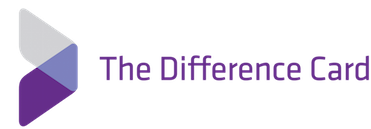There’s no shortage of primary physicians, but rather a shortage of primary physicians who are able to use their time efficiently in today’s healthcare environment.
That’s why the industry is moving away from the first version of the EMR, according to Dr. Lyle Berkowitz, the associate chief medical officer of innovation at Northwestern Memorial Hospital and Medical Director of IT & Innovation at for Northwest Memorial Physicians Group in Chicago.
The inaugural EMRs are basically computerized versions of paper records that weren’t necessarily designed with usability in mind, he noted. So rather than saving time and making administrative processes easier, they’re in some cases adding to doctors’ workloads.
Enter the next wave of health IT innovators, who are taking EMR data and using it elsewhere to improve workflow. “(EMR vendors) are kind of stuck to Meaningful Use and creating a standardized format to make sure everybody is at the first-base level,” Berkowitz said. “That’s a good start, but we have to start building tools that can fit on top of these. A whole ecosystem is going to build up on top of EMR systems to make them easier and faster to use.”
And, it seems that EMR companies are getting on board with that as well.
“They buy into this idea that innovation comes from the outside by saying, we’re going to open up our system and let others build on it,” he said. “AllScripts I think is leading the charge. Athena Health is moving that way, and some others. EMR vendors are going to be end up being able to provide more and more solutions to their users this way.”
EMR extender companies have been around for a while; business intelligence and data analytics are well-established industries. But we’re seeing the dawn of a new category of innovation focused on workflow tools to make doctors more productive and efficient – what Berkowitz calls “physician happiness.”
There’s evidence of that, in the form of companies like Modernizing Medicine, which makes a touch-based “electronic medical assistant” for specialists, and SchedFull, which is working on a way to help physicians fill canceled appointments that it hopes to integrate with web-based EMRs.
There’s also healthfinch, the company Berkowitz co-founded with designer Jonathan Baran and programmer Ash Gupta in 2010. It’s focused on making the practice of medicine more enjoyable for physicians by letting them focus on the higher-order thinking they’re good at, rather than spending their time on paperwork. (He compared this to the process of making a new car, and the absurdity of the idea that the people who design technology for the cars would spend part of their time working on the assembly line.)
The place where doctors can best apply their skills is the 10 to 20 percent of very sick, complex patients they see, Berkowitz said. That’s precisely why healthfinch focuses on the other 80 percent of patients who might be fairly stable. By creating protocols and automated processes for meeting the needs of these stable patients, other staff members can work together to take care of them, and the doctor has more time to spend with sicker patients.
Its first product focuses on using data to design a protocol for handling medication refills. Doctors receive many refill requests every day, many of which require them to review charts to ensure patients have completed follow-ups or lab tests. Some of this work could be delegated to the nursing staff or medical assistants. To make that happen, RefillWizard leverages EMRs to help practices manage prescriptions more efficiently.
Healthfinch plans on using the same technology and philosophy to continue developing products that will save doctors more time by using every person on the staff to the highest level of his or her licensure.
“I’m always on the lookout for things I do repetitively, to see if they can be automated,” Berkowitz added, in illustrating what inspires his innovation. “I’m always trying to figure out how to take something I do in 20 steps and cut it down to five steps or, even better, zero steps.”










